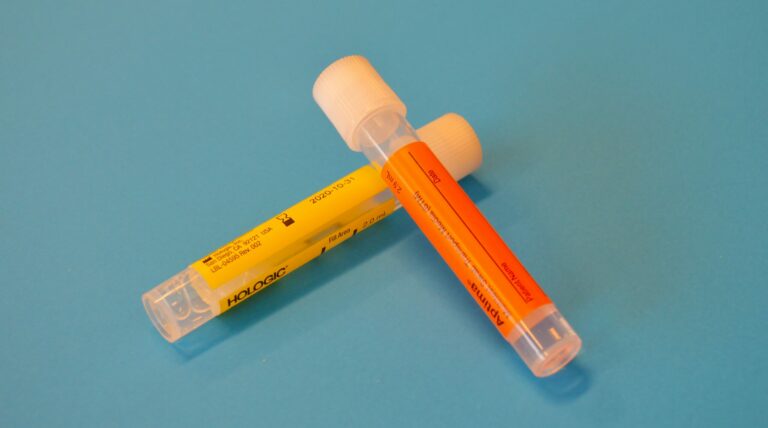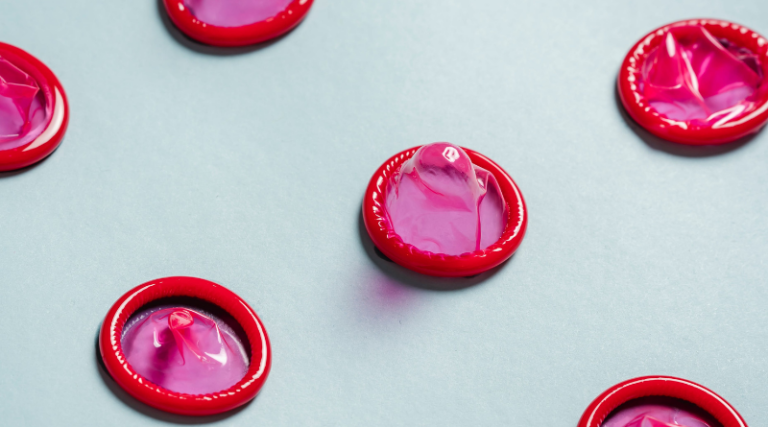Pulling out
Just how safe is the withdrawal method of contraception?
There are more than 15 different types of contraception, designed to stop unwanted pregnancies and to protect you against sexually transmitted infections (STIs). Each form of contraceptive has its different pros and cons, and it’s worth researching these if you’re thinking about having sex. Even if that’s not going to be penis-in-vagina sex.
However, there are also some people who —when having penis-in-vagina sex— use the pull-out method as a contraceptive tool. It’s sometimes called the ‘withdrawal method’ or ‘coitus interruptus’. This is when someone pulls their penis out of someone’s vagina before they ejaculate, which usually results in them shooting a load onto their partner’s thighs or abdomen.
While you may not have heard many facts about pulling out, studies suggest it’s pretty popular. According to one study from the American Center for Disease Control, 60% of sexually active women aged 15-19 use the pull-out method as their primary form of contraception, and the Family Planning Association recently reported that around 4% of sexually active couples in the UK use this as a regular contraceptive method.
But before you start experimenting with this, there are some things worth considering to avoid landing in a sticky situation:
It’s ineffective
First and foremost! Because it can be so hard to control ejaculation, pulling out is one of the most ineffective forms of contraception. In fact, most medical professionals do not even consider it a contraceptive method.
Some statistics suggest the pull-out method is effective if used perfectly – but most go on to say the vast majority of people who rely on pulling out are not doing it the right way. Because of this, it’s estimated around 27 out of 100 people who use the withdrawal method get pregnant each year. That’s more than a 1 in 4 chance of getting pregnant.
There are also lots of different studies into whether pre-cum (the fluid that comes out of the penis during sex but before ejaculation) contains sperm. Doctors have been arguing about this for years – some say it does, some say it doesn’t. But as long as they’re uncertain on this point, we think it’s better to be safe than sorry.
It takes nearly an impossible amount of control
For the pull-out method to work effectively as a contraceptive method, the person with a penis must be able to exercise strict control over their orgasm. If there is a chance they could lose this control, ejaculate unexpectedly, or be unable to pull out in time, it’s not an advisable practice. To add to this, having to put all your energy into controlling your orgasm can make sex less fun – and it can be frustrating to have to stop and pull out just as you’re getting close to your orgasm!
It does not protect you against STIs
Even if your ejaculation is timed to the nanosecond, nothing about pulling out is going to keep you safe from STIs. There is only one existing form of contraception that will protect you from STIs: condoms. If you’re going to use one of those to keep yourself safe from STIs, you don’t need to bother with pulling out in the first place!
If you have relied on pulling out as a contraceptive method and are worried about getting pregnant, remember that you can take emergency contraception (often known as the morning after pill) up to 5 days after having unprotected sex to protect yourself from an unplanned pregnancy. Although you can take it up to 5 days after, it becomes less effective as more time passes. The NHS also has information about unplanned pregnancies and the options available to you.
Other support
- Contraception
- Where to get a sexual health check in the UK
- Planned Parenthood – Withdrawal (pull out method)
- Brook – Contraception: FAQs and myth-busters
Read more
Last Reviewed 27 February 2023
Image Credit: Markus Spiske via Pexels







